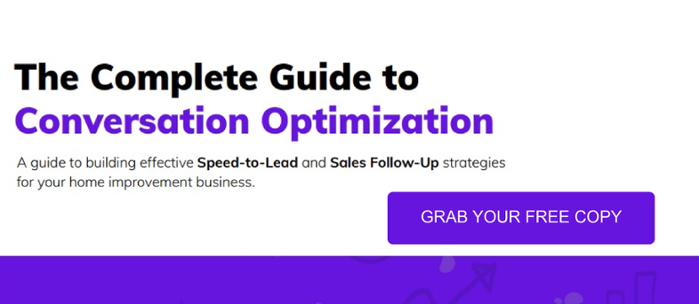We all know how important text messaging is in our personal lives. It’s our main form of communication - the way we reach out to friends, family, and even coworkers. But did you know it is also the preferred method of communication for customers as well? A large-scale study found that 85% of consumers prefer texting with a company over both email and phone calls. Even more compelling is the fact that nearly two out of three (63%) consumers say they’d be willing to switch businesses to one that will contact them via text message.
So how should you be using text messages in your business? And what are the most important best practices surrounding text messaging?
- Use text messages to secure leads. Start with the assumption that every lead that comes in prefers text messaging and follow up with a text message as soon as possible. Best practices show that responding by 1-5 minutes after a new lead pops up gives you the best chance of success. The speed at which you follow-up to a request from a lead is of critical importance. Consumers are most likely to go with the first company that responds. Text message is the best way to ensure you’re that company. That being said…
- Don’t eliminate other communication methods. While the majority of your customers will respond more quickly to a text message, there are others that will prefer email or a voicemail. This means that you should NOT stick with text messaging only. There are a variety of customers with different lifestyles and preferences. Some may respond to email. Others may prefer the good old fashioned phone. The key point here is to make sure that you find out the preferred method of communication for each individual lead and use it. We recommend the 5-2-5 method. Within the first five days of getting a new lead, send 5 text messages, 2 emails, and 5 voice messages. You want to cover all of your bases.
- Keep leads moving through the sales cycle with text. So you were the first person to respond. The next goal is to be the first person into the house to leave a quote. You can keep the conversation going using text message. Once you’ve given the quote, use text messaging to follow-up. Too many leads fall into the cracks after this point. Check in and see how they’re feeling. Find out what objections or concerns they may have.
- Make the customer experience top notch. Hopefully you’ve landed the sale. If you’re busy, however, communication with customers can be challenging. And if something gets missed, you may end up with an unhappy customer or even a negative online review. In fact, poor communication is the #1 reason for customer complaints. Keep those channels of communication going strong through text messaging.
- Follow up with former customers. Some of your best potential leads are actually old ones - former customers! Use text message to reach out periodically to happy customers to see if they’re looking for any additional work done. This is a high-impact way to bring more leads into the sales funnel.
- Automate, automate, automate. It may seem like keeping up with all of this text messaging could be a huge headache. This is where automation comes into play. Using technology like Hatch, you can easily automate your texting communication. Live reps are notified when they need to rejoin a conversation so that the process is as natural and easy as possible.
Text messaging has never been more important for businesses. It is not only the way consumers prefer to be contacted, but also the most likely way for you to be successful in securing a deal and creating a happy customer.
Want to learn more about how to communicate well with customers and prospects? Read our free ebook.
